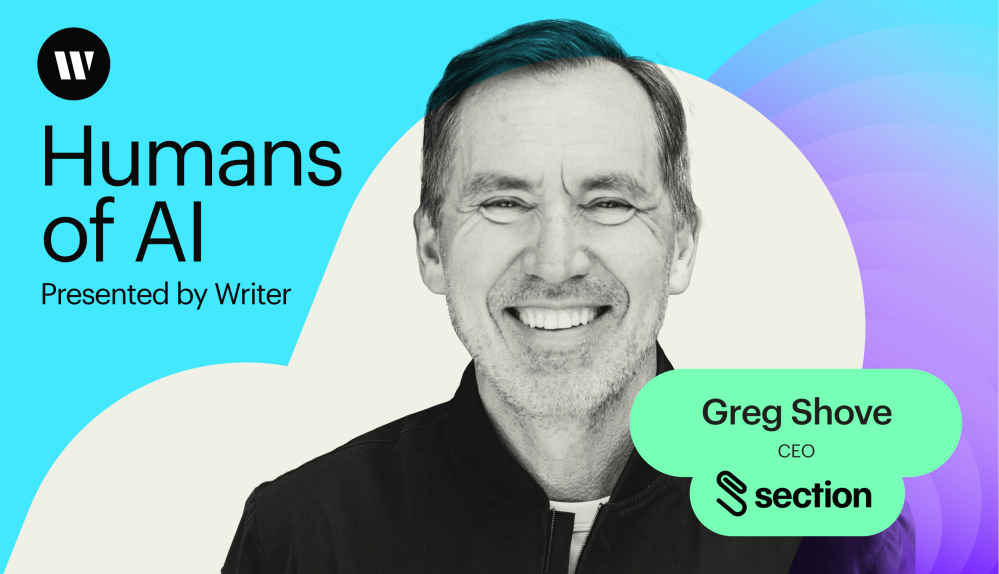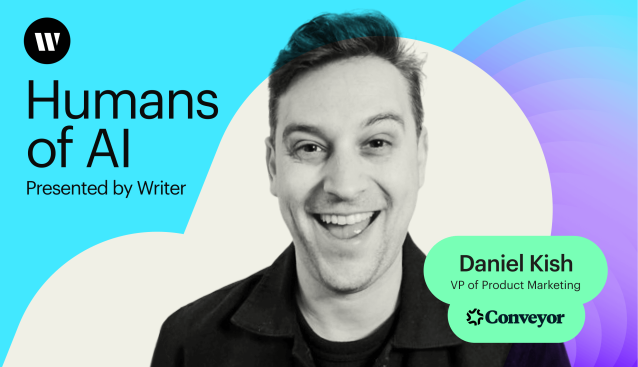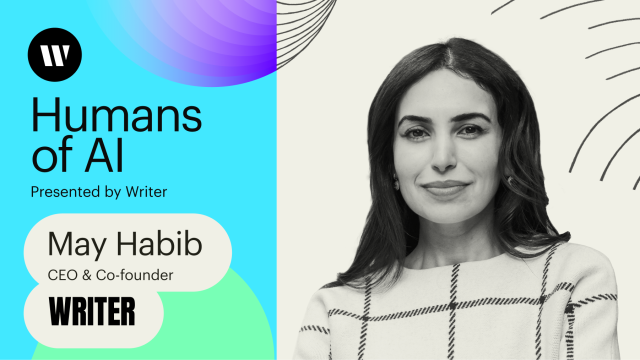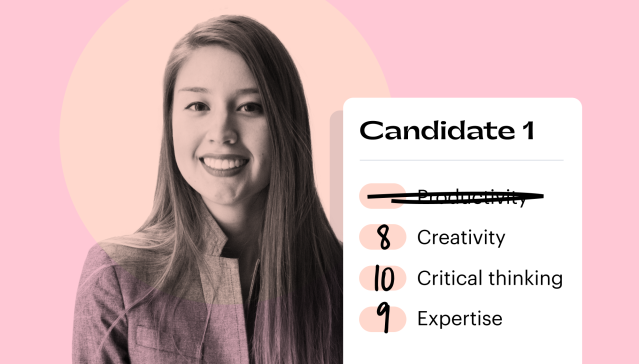Humans in the loop
– 10 min read
Beyond ego: Section’s Greg Shove’s journey with AI as a thought partner

Nobody wants to play catch-up, especially in the business world. If you’re not encouraging AI use in your organization already, our latest guest, Greg Shove, presents a compelling case that just might change your mind. And if he does, prepare to leave your ego behind and adopt a beginner’s mindset to get the most out of this technology.
Greg Shove is the CEO of Section and founder of Machine and Partners. Greg explores the indispensable role of AI in modern business, emphasizing its ability to act not just as a tool, but as a strategic advisor. He speaks to AI’s benefits at every career stage — acting as a mentor to young workers and helping more seasoned leaders offset their biases and blind spots.
Join us as we look at what mindset shifts are necessary for using this transformative technology, and how Greg and his team include AI in their board meetings.
- Greg uses AI as a thought partner, seeing it as a valuable tool for people at any stage of their career.
- AI can serve as a digital board of directors, offering advice and insights similar to those of human board members.
- Greg believes that leaders need to personally use and understand AI, as it’s a different tool from traditional software or search.
- There is a need for change management in organizations to lower workforce anxiety about AI and encourage its use.
- Greg advises younger individuals to familiarize themselves with AI and use it as a tool to enhance their capabilities and potential.
AI as an unbiased thought partner
Whether we’d like to admit it or not, we’re all prone to biases and blind spots. This only gets truer the further we get into our careers, as we’ve spent more time developing intellectual and cognitive habits.
Greg says we need to recognize those blind spots — we can’t wish them away. Once we’ve done that, we could benefit from a thought partner … and why not have that be AI?
“I’m just surprised how few people use AI as a senior advisor or consultant,” Greg says. “We do have underdeveloped cognitive muscles. We have overdeveloped cognitive muscles, right? We want to complement those. I use AI all the time as a thought partner on any kind of decision.”
Greg realized that wanting to keep working in startups and technology in Silicon Valley meant working with a lot of young, smart people. One way to keep up as a 62-year-old? AI. He says it’s this mindset about AI that’ll allow him to stay in the workforce for 10 more years.
“My brain is aging out,” he says. “When I first played with ChatGPT, I’m like, ‘This could be it.’ So I was hooked almost from day one.”
After recognizing the power of working with different AI models, he changed the entire vision of his business. Section used to be an online business school for executive education. He decided AI was the wave he wanted to ride and the direction he wanted to take his business.
“And so we did pivot to really focus on AI through the lens of business,” he explains. “So we’re not teaching AI for engineers or for software developers. We’re teaching AI for people that work in marketing and sales and finance and so on.”
Two-thirds of executives don’t feel equipped with the necessary technology and change leadership expertise to drive AI reinvention in their organization. Much like one of our previous guests, Daniel Kish, Greg also believes in embracing a player-coach model and gaining practical experience with generative AI.
“We have to model this behavior,” Greg says. “I run an AI training company and they’re AI investors. We should be modeling this behavior for our teams, for our colleagues, for our friends and family. This is how we’re going to work, and we’re in the middle of it. We should be showing others how to do it.”
AI in … the boardroom?
For Greg and his team at Section, AI is more than just a supplemental tool. AI truly is a thought partner — it’s even one of the board members.
Both AI and human board members receive identical preparatory materials, allowing for a direct comparison of the insights each group offers. Over the past year, they’ve observed that AI models perform impressively close to that of their human counterparts — hitting about 90% effectiveness.
“Now I do this every board meeting, and I tell the board they should do the same,” Greg explains. “So when I send the pre-read to the board, what I say to them is, ‘Here’s your prompt. You should be using this with AI before the board meeting.’ And I’m doing the same on my side.”
Greg introduced a creative twist by having AI adopt different strategic personas during pre-meeting preparations. It can act as an aggressive growth advocate or a conservative figure focusing on financial safety. Greg finds preparation with these diverse perspectives makes board meetings much more efficient.
“We should be able to come to this board meeting a little more elevated in our thinking, a little more elevated in kind of our understanding of what’s going on,” He says. “Because we’ve had AI help us play these roles and essentially be our thought partner.”
Leave your ego at the door
So, now that he knows AI is almost just as good as the human board, is he getting rid of his employees?
“No. We need human boards for different reasons,” Greg says. “They have great networks. It’s great to hear from a human. It’s great to get encouragement from a human, and it’s great to be held accountable by a human.”
Still, Greg and other high-level executives can save plenty of time by taking some of the advice from AI. But that requires putting egos aside, something that doesn’t come easily to all. If Greg can listen to the AI from time to time and recognize his own blind spots — rather than scheduling 90-minute board meetings — it’s going to be a better use of everyone’s time.
Adoption starts in the C-suite
Greg stresses that C-suite executives need to personally experiment with AI to grasp its full potential and limitations. They can’t view the same way as software or search.
“The way we think about workforce automation or productivity just doesn’t apply to AI,” Greg explains. “And the first thing a leader has to do is get that mind shift themselves and really understand what this is. It’s not probabilistic, and it’s not predictive.”
It’s better to think about how and where each department will find value in AI. The reality is, every employee and every business is going to use it somewhat differently. Customer support teams might use generative AI to enforce brand consistency across all customer interactions. Marketing teams might benefit more by scaling content reproduction with generative AI. The plethora of use cases can make company-wide AI adoption a bit of a gamble.
“I have a lot of respect for the organizations and the CEOs that are deploying organization-wide AI tools because they’re betting — and it’s not an insignificant bet — that their organization will be better off,” he says.
Greg points out some global brands have already achieved 80% adoption rates across their organizations in less than a year after integrating generative AI. Those early adoption rates are a distinct competitive advantage.
“If you have an organization with 80% adoption of AI in their daily workflows, that’s not an organization I’m gonna want to compete with if I’m not AI-enabled,” Greg says. “But we don’t have that data yet. We’ll know that in a couple of years.”
Combat workplace anxiety with change management
Not every organization is looking at AI to complement their existing workforce.
“CEOs and CFOs are loving AI, just not for themselves. They’re loving the promise of it because in their minds, that means reduced headcount,” Greg explains. “And everybody knows that inside the organization, so the anxiety levels are going up and they are already high in the US workforce.”
This fear is what’s causing workers to hesitate embracing or adopting these technologies. “Rolling out AI” is becoming another way to say, “There’s going to be another layoff in six or nine months.”
Even though Greg recognizes that’s the case for many businesses, he hopes it doesn’t stop leaders — especially those early in their careers — from embracing AI. 44% of workers aged 26–43 are worried that AI might make some or all of their job duties obsolete. Greg stresses there are many use cases for AI and that leaders need to focus on change management to dispel worries and prepare employees for AI disruption.
“It’s about training a little bit, but it’s a lot about change management,” he says. “So it’s a lot about lowering workforce anxiety about it and getting people to start to use it, play with it, and without specific productivity goals.”
How to use AI for professional growth
Not every early-stage leader is fortunate to have a helpful mentor or boss. In the absence of direct human oversight, AI can step in as that guide.
“If you’re ambitious and your career is accelerating, you’re often put in positions where you haven’t been before and you need to figure stuff out, typically for the first time,” Greg says. “Use AI in those moments to be your thought partner and reduce some of that risk and even anxiety.”
Greg says he’d tell his 30-year-old self to get his hands on AI as fast as he could. Developing personal use cases and finding your own workflows will help you see where you get the most out of AI. This will prevent you from being at the bottom quartile of your team — because teams might get smaller as we enter the age of AI.
Greg’s advice to young leaders is clear: embrace AI early in your career to expand your capabilities, reduce workplace anxiety, and set a foundation for long-term success.
“Before you get in a fixed mindset around what you’re good at, you can realize, ‘Wait a minute, I can flex a bit and open up my capabilities or my toolkit.’ Anything that gives people confidence in their potential and gives them evidence that they have more potential, I think is such a powerful thing. I love that.”
We could all use a buddy for our brains, and Greg has laid out the perfect way to partner with AI. Adopt a beginner’s mindset and accept that when you learn to use AI, it’s here to complement you — not replace you.
Want to hear more stories from the humans working at the crossroads of business and generative AI? Subscribe to Humans of AI wherever you listen to podcasts.


